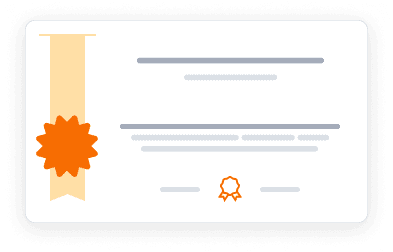Learn the principles of indoor lighting design and its effects on human health, comfort, and performance.
Learn the principles of indoor lighting design and its effects on human health, comfort, and performance.
This comprehensive course explores lighting principles and human factors in indoor environments. Students learn about daylight and electric light sources, spatial distribution, measurement techniques, and simulation tools. The course covers both theoretical foundations and practical applications, emphasizing the importance of proper lighting design for human well-being.
Instructors:
English
What you'll learn
Master indoor lighting principles and effects
Understand daylight and electric light integration
Analyze spatial light distribution patterns
Apply lighting standards and guidelines
Use simulation tools for lighting design
Conduct light measurements and analysis
Skills you'll gain
This course includes:
7 Hours PreRecorded video
7 assignments
Access on Mobile, Tablet, Desktop
Batch access
Shareable certificate
Get a Completion Certificate
Share your certificate with prospective employers and your professional network on LinkedIn.
Created by
Provided by

Top companies offer this course to their employees
Top companies provide this course to enhance their employees' skills, ensuring they excel in handling complex projects and drive organizational success.





There are 9 modules in this course
The course provides a thorough understanding of indoor lighting through nine comprehensive modules. Topics range from fundamental principles to advanced simulation techniques, covering light sources, spatial distribution, human factors, standards, and measurement methods. The curriculum balances theoretical knowledge with practical applications.
Lessons Learned from Integrating MHPSS and NCD Prevention and Care
Module 1 · 2 Hours to complete
Chapter 1 - Why? The application of light in indoor contexts
Module 2 · 47 Minutes to complete
Chapter 2 - Daylight and Electric Light Sources
Module 3 · 38 Minutes to complete
Chapter 3 - Spatial light distribution - macro-level (building scale)
Module 4 · 1 Hours to complete
Chapter 3 - Spatial light distribution - macro-level (building scale)
Module 5 · 1 Hours to complete
Chapter 4 - Spatial light distribution - micro-level
Module 6 · 51 Minutes to complete
Chapter 5 - Spatial and temporal behavior
Module 7 · 55 Minutes to complete
Chapter 6 - Why do we quantify light? Standards
Module 8 · 44 Minutes to complete
Chapter 7 - Lighting simulation with grasshopper plugins
Module 9 · 1 Hours to complete
Fee Structure
Payment options
Financial Aid
Instructor
Expert in Light and Environmental Psychology
Professor Yvonne de Kort is a full professor of environmental psychology at Eindhoven University of Technology, where she leads research within the Human-Technology Interaction group and serves as vice dean of the Department of Industrial Design. Her work focuses on understanding how environmental factors, particularly lighting, influence human behavior and well-being. With a strong emphasis on the contextual nature of human interactions with technology, Professor de Kort explores the interplay between physical environments and psychological responses, contributing valuable insights into design practices that enhance user experience. She is actively involved in interdisciplinary projects and has taught multiple online courses, sharing her expertise on the effects of light in various settings. Through her research and teaching, Yvonne de Kort plays a pivotal role in advancing the field of environmental psychology, particularly in relation to how lighting can be optimized to improve both functionality and comfort in everyday environments.
Testimonials
Testimonials and success stories are a testament to the quality of this program and its impact on your career and learning journey. Be the first to help others make an informed decision by sharing your review of the course.
Frequently asked questions
Below are some of the most commonly asked questions about this course. We aim to provide clear and concise answers to help you better understand the course content, structure, and any other relevant information. If you have any additional questions or if your question is not listed here, please don't hesitate to reach out to our support team for further assistance.



